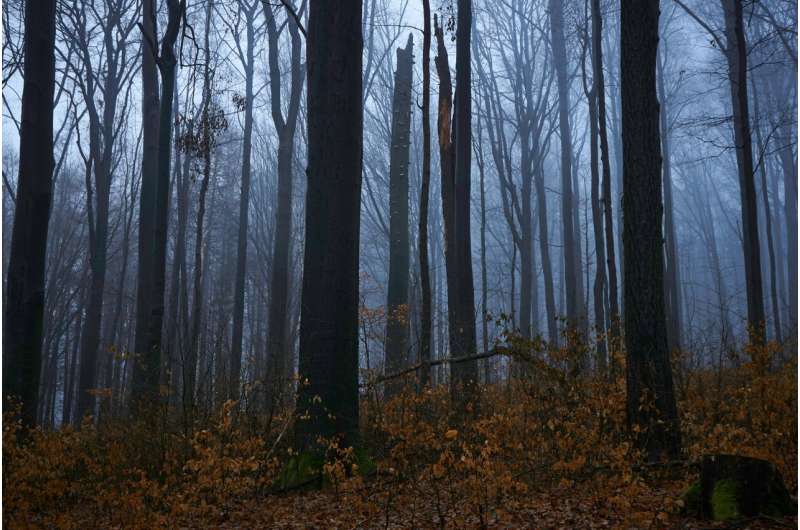This article has been reviewed according to Science X's editorial process and policies. Editors have highlighted the following attributes while ensuring the content's credibility:
fact-checked
peer-reviewed publication
trusted source
proofread
Study offers rare long-term analysis of techniques for creating standing dead trees for wildlife habitat

Ecologists have long known that standing dead trees, commonly referred to as snags, are an important habitat element for forest dwellers and act as a driver of biodiversity.
They're so important that in some managed forests, snag creation is part of the conservation tool kit—i.e., crews sometimes convert a percentage of live trees into dead ones through techniques ranging from sawing off their tops to wounding their trunks to injecting them with disease-causing fungi.
Until now, however, key questions had remained unanswered: How well do any of those techniques actually work over the long term? And which ones are cost-effective for land managers seeking to enhance habitat?
Jim Rivers of the Oregon State University College of Forestry looked at nearly 800 large-diameter Douglas-fir trees that had been subjected to snag creation treatment in southwestern Oregon in the early 2000s. He learned that chain-saw topping was the best way to have a rotting, standing dead tree after a couple of decades, especially if the topped tree had minimal live branches left in place.
His work is published in the journal Forest Ecology and Management.
"The key finding from this study was a strong divergence among snag creation treatments in the extent of tree decay 18 to 20 years after treatment," Rivers said. "Mechanical wounding and fungal inoculation showed limited ability to create snags and promote structural diversity in the forest. And adding fungal inoculation to trees that have been topped with chain saws does not appear to be worth the additional expense and time. It resulted in only small increases in the extent of decay relative to what topping alone could do."
In wilderness areas, snags occur on their own as trees die from natural causes. Some remain standing for more than a century, serving as homes and feeding grounds for a host of vertebrate species.
Snag-reliant woodpeckers are of particular importance among those species, acting as ecosystem engineers through their foraging and nesting activities. Woodpeckers help regulate insect pests, serve as indicators of forest health and create nesting cavities that are used by a host of other species.
Despite snags' ecological importance, standing dead trees in managed forests are often removed for their commercial value or to avoid interfering with forestry operations, especially as it pertains to worker safety during timber harvesting. In Oregon, there are no snag requirements on state or private lands.
"Snags support multiple functions within forest ecosystems," Rivers said. "They provide vertical structure and contribute to nutrient flows and carbon cycling in addition to providing habitat for a diversity of organisms. But many have been lost from managed forests, especially large-diameter snags."
In this research, Rivers examined snags near Coos Bay in a pair of study sites totaling 7.5 square kilometers in area. The two sites are about 4 kilometers apart.
All of the treatments resulted in some type of decay, but the markers of decay, such as whether a tree was broken, was cracked along the bole or had peeling bark, were strongest on trees that had experienced chain-saw topping.
Rivers said the study makes it clear that when managers interested in snag creation are deciding which treatment or treatments to use, they should think in terms of time span—i.e., how quickly do they want decay to occur in newly created snags.
For example, if the goal is rapid decay—such as within five years, to rapidly create snags in an area with few or none—chain-saw topping seems to be the best method.
"But if the goal is to promote slower decay over longer time frames such as decades, mechanical wounding may be more appropriate," he said. "Wounding involves removing a section of the tree base and leads to a slow decline."
Rivers added that concurrently implementing different treatments can extend the total period during which human-created snags are available to deadwood-dependent wildlife—and also cut costs by eliminating the need to get crews back into stands to do snag creation at multiple points in time.
More information: James W. Rivers, Fungal inoculations and mechanical wounding of trees have limited efficacy for snag creation two decades after treatment, Forest Ecology and Management (2023). DOI: 10.1016/j.foreco.2023.121651
Journal information: Forest Ecology and Management
Provided by Oregon State University




















